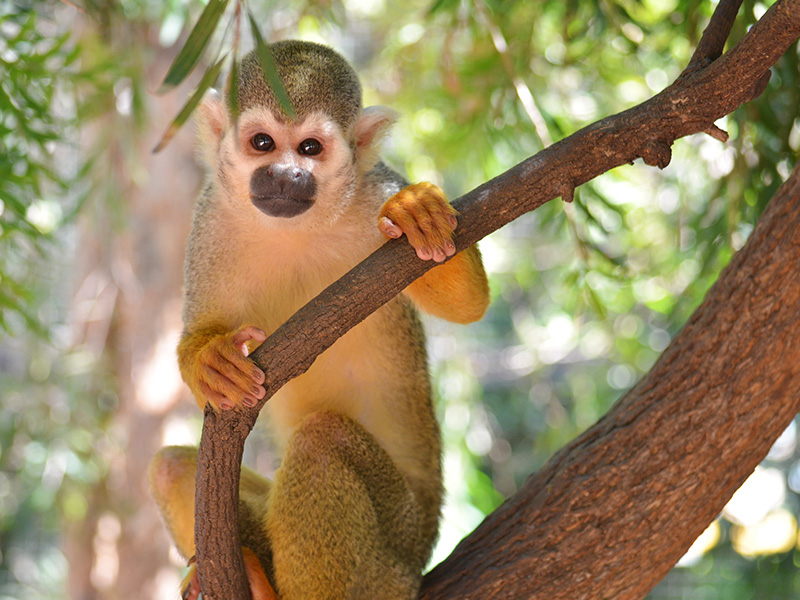




Squirrel Monkey

























The Common Squirrel Monkey (Saimiri sciureus) is the most common species in the Saimiri family, found in the northern and western Amazon basin, including countries such as Brazil, Peru, Ecuador, Colombia, Venezuela and Bolivia. Despite its long tail, it moves around on all fours, either walking or running, using its tail to keep balanced as it nimbly moves and jumps between tree branches.
It is a diurnal and arboreal animal, living along riverbanks and in flooded forests. It is omnivorous, feeding mainly on fruit, some insects, leaves and seeds, and spends around three quarters of the day searching for food and small prey to eat. During dry seasons, when there is no fruit, squirrel monkeys are able to subsist solely on animal prey.
They form large groups made up of males and females that can reach up to 300 monkeys in total, although they usually form groups of between 20 and 75 individuals. The hierarchy is usually linear and very distinct in both sexes. Females usually occupy the top of the hierarchy, although males establish their own hierarchy within their small coalitions, mainly to watch out for predators that threaten the group. In small groups of males, behaviour is more dominant and aggression is more frequent, which is more common in females. Squirrel monkeys also often form mixed groups with other primate species, such as capuchin monkeys, benefiting from their loud alarm calls in case of possible predators of the group, which are mainly birds of prey, wildcats and snakes, and they also take advantage of the movement caused by these other species to the treetops, as they disturb insects as they pass by.
Mating and breeding are highly seasonal, rarely lasting more than two months of the year, with births usually occurring every two years. After a gestation period of 160-170 days, squirrel monkeys give birth to a single offspring, which is weaned at four to six months of age. Males do not take care of the young.
Although they are not hunted for food due to their small size, they are captured for the pet market in some countries, such as Colombia or Ecuador, and are threatened by the destruction of their habitat for agriculture and livestock farming. Selwo Marina's group of squirrel monkeys is part of the European Endangered Species Programme (EEP) of the European Association of Zoos and Aquaria (EAZA).